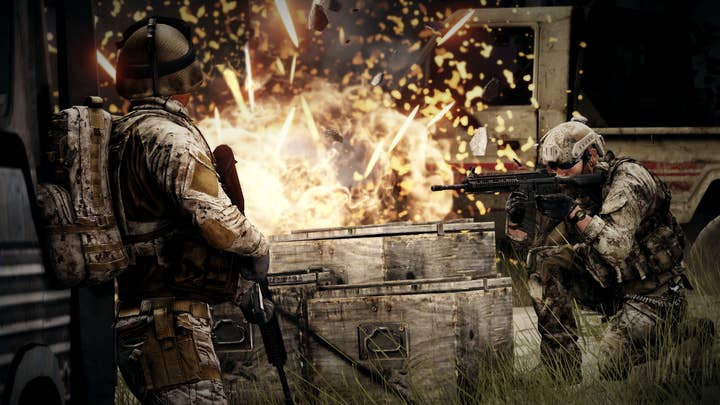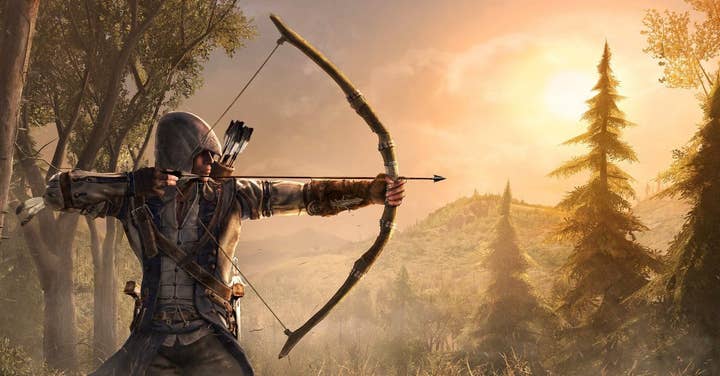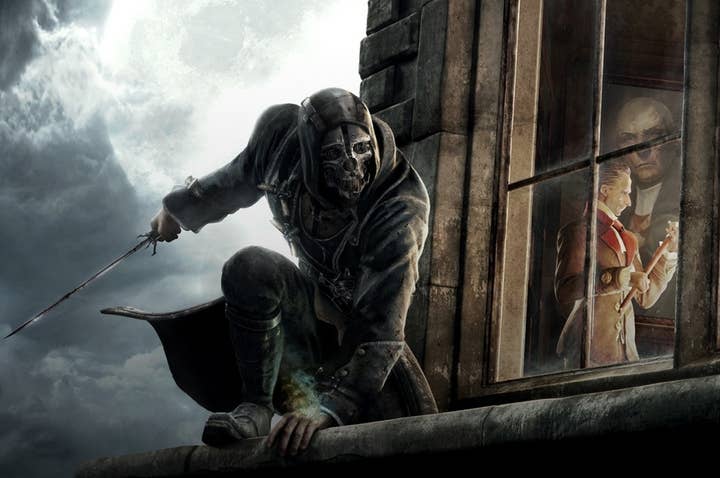Infinite Loop: IP, innovation and the console cycle
Publishers' aversion to new IP late in the hardware generation exposes dubious logic that could harm the AAA industry
At around this time in any given year, journalists devote a considerable amount of energy to compiling lists of their favourite games from the preceding 12 months. It is, of course, a gesture of respect to the dedicated, talented people in this industry, but it also handily doubles as an opportunity to flaunt the breadth of our knowledge and taste. As such, blockbuster sequels tend to be last up for scrutiny: by the time a series has reached its third iteration it has little left to prove, and few eyebrows left to raise. As people who trade in stimulating opinion, we gravitate towards dark horses and wild cards, but in 2012 the mainstream industry has offered very few that are worthy of consideration.
Inevitably, it has been a year for sequels. With one new console now finding its feet and, more than likely, another two incoming next year, the industry's major publishers are adhering to the almost universally accepted logic that launching new IP late in the generation is an act of commercial self-harm. That the latter half of the year would be saturated with 3s and 4s was abundantly clear from the products on display at Gamescom, where I talked to EA Games' Patrick Söderlund beneath banners for somewhat dubious prospects like Medal of Honor Warfighter and Army of Two: The Devil's Cartel.
“Today, we're showing a lot of sequels,” Söderlund says, “but I can tell you that we're working on many new IPs. The day that we stop working on new IP is the day that I'm leaving.”
"If you removed the names of the games [at Gamescom] today, and put up screenshots of all the games out there, you're going to have a hard time naming many of them"
Patrick Söderlund, EA Games
An hour later, under a different set of game banners - Dead Space 3 and Crysis 3, in case you're interested - Frank Gibeau indicated that EA has as many as 5 new IPs in different stages of development, but we won't get a glimpse of even one until the console manufacturers show their hands. The logic goes something like this: after five or more years of the same hardware the consumer succumbs to a sort of malaise that dulls their enthusiasm for new ideas, and draws them to the cosy familiarity of trusted brands; the launch of new hardware, however, rekindles their love-affair with originality, creating fertile ground to establish a franchise or two. As always, there are numbers to back this up.
This line of thinking is by now well understood, completely dictating the sort of product available to the consumer. However, it is also circular and self-perpetuating. If you prefer the polish and ambition of AAA games there were few truly original titles available to buy this year, but there was a blockbuster sequel every week. Executives like Gibeau argue that this is justified by the market, but how can there be demand when publishers are strangling the supply?
“When you make a new IP you really have to be sure it will stand out, that it offers something meaningful to the mix of products,” Söderlund says. “I, for one, don't want to make a new IP if it's just more of what's out there.”
Few would argue against that point, but Söderlund concedes that new hardware is certainly not a strict pre-requisite for creating powerful new experiences. PopCap, for example, is utterly merciless when developing new IP, cutting dozens of hopeful concepts in the search for a perfect solution, and hardware has rarely played a role in the company's considerable success. Or there's Mirror's Edge, a game Söderlund worked on while at DICE, and one that owed many of its sales - around 2 million units - to its innovative art direction.

“It wasn't a perfect game, but we made something different,” Söderlund says. “People were immediately interested in it, and I think that's the approach you need to take when you make a new IP... I still look at a lot of new IPs that come out and think, 'Wow, that was a missed opportunity. They could have done so much more'.
“If you removed the names of the games [at Gamescom] today, and put up screenshots of all the games out there, you're going to have a hard time naming many of them. I bet that you would immediately be able to name Mirror's Edge.”
It would certainly grab the attention as much as Medal of Honor: Warfighter ultimately did, and, with enough of a marketing push, it wouldn't be absurd to suggest that its unique qualities would have been met with a comparable or even superior level of commercial success. The most useful reference point this year was Arkane Studios' excellent Dishonored, which is precisely the sort of original AAA product that most publishers wouldn't touch during a generational handover. Dishonored was a triumph of distinctive design and gold-standard execution that found a large enough audience to prompt discussion of a sequel just a few months after its launch. According to Harvey Smith, joint creative director of Dishonored along with Arkane's Raphael Colontonio, anticipation around the game was fuelled by the dearth of original IP among this year's AAA releases.
“People always come at me and Raph with that: 'Wow, you guys are launching a new IP at the end of the console cycle - that's bad for a few reasons.'” he says. “First of all, people working on existing franchises have iterated and iterated and iterated on them. But, man, when we talk to gamers they're so hungry for something new.
"We're creatures that are driven more by that excitement than strategic planning, because, frankly, the strategic planning is not right all that often"
Harvey Smith, Arkane Studios
“There is a certain mind-set in the industry that says, 'don't follow strategic advice'. If you get a bunch of executives in a room and they all come to some agreement - rules like not launching IP at the end of a cycle - a kind of group-think takes over. It's not really value driven; it's like the lowest common denominator. 'We're all trying to make a profit, so let's all do the safest thing.'
“Raf and I are driven by what excites us: the world of Dishonored, the city of Dunwall, a game about an assassin where you literally don't have to kill anyone; a crazy concept, but when we talk about the game that's one of the things that lights people up. We're creatures that are driven more by that excitement than strategic planning, because, frankly, the strategic planning is not right all that often.”
For Bethesda, a company whose success is built on two hugely popular and very well established IPs, there would be no intrinsic value in holding back a game like Dishonored for the next generation. It takes time to build the sort of audience that greets a new Elder Scrolls or Fallout game with such enthusiasm. Ultimately, the starting point for that process matters less than we are led to believe, and Dishonored's innovative qualities are less about hardware and more about good design.
“At the end of the day we are excited and interested to do games that excite and interest us,” says Pete Hines, Bethesda's vice president of marketing. “If that's a new IP then we make that work. If it's an existing IP great, so much the better in terms of having some semblance of a built in audience. But we certainly don't sit around and say, 'well, we can't do any new IP until a new platform has come out.'
“In any scenario I think [Dishonored] would be appreciated, but it's even more so in the current environment... because so many other people aren't doing it. And [consumers] do have an appreciation for 'I feel like this is different than anything else anybody is trying or doing. I appreciate not being fed, you know, shooter X.'”
Indeed, id Software's Tim Willits believes that the key to launching new IP is a combination of a strong, distinctive product and, even more important, the full weight of the publisher's marketing resources. Production budgets for AAA releases are now at an all-time high, and so are the stakes should a game fail to find a big enough audience. This makes eyeballs perhaps the single most important factor in creating success, and eyeballs are arguably easier to find now than they will be after the launch of the next Xbox.
“Publishers really need to swing for the fences when you launch new IP now,” Willits says, between stories from the comparatively ramshackle launches of Doom and Quake. “You have to launch it big, take the risk, and have faith in your developer, otherwise it doesn't matter how good your game's going to be. If you don't get it out in front of as many people as you possibly can it will struggle to survive.

“Consumers obviously don't have infinite dollars. They prefer to spend their money with something they know is a sure bet, and the publishers tend to spend their money where they know it's a sure bet. But I believe that the industry needs to continue to create new IP, because it will get stale and old fast, and consumers will go to a different industry.”
This is a quietly provocative point. As publishers hunker down with their established brands and wait for new consoles, they could well be contributing to the stolid market they cite as the reason for doing so in the first place. And according to Willits, a longer hardware cycle is exactly what most developers want - “it's soooo much nicer.” With more time to understand the hardware and learn its strengths, the general quality of the games will improve, making it easier to execute an ambitious design like Dishonored to a high standard. As things currently stand, this period is saturated with sequels, and then cut short to make way for new consoles.
"The industry needs to continue to create new IP, because it will get stale and old fast, and consumers will go to a different industry"
Tim Willits, id Software
Of course, where there are strengths there must also be limitations, and a handful of releases this year are clearly pushing at the edges of what these consoles can comfortably achieve. However, for Arkane's Harvey Smith, working within constraints is simply a part of effective design: over-reaching is a choice on the part of a the developer, not an intrinsic part of making a good product, and not necessarily proof of the 'need' for a whole new platform on which to work.
“I'm always excited about new hardware, because when it comes along there's a bunch of low-hanging fruit for creative expression,” says Smith. “Everybody embraces the new features, and suddenly there's a set of new things you can do with games. But you'll keep spending more and more money unless you have some kind of constraint.”
The ramnmifications of Smith's point are difficult to overstate. New consoles are exciting, of course, but the hardware cycle is a huge part of the reason why games are now so expensive to produce, and why so many developers have been forced to sell-up, downsize or close altogether. Ultimately, the arrival of a new PlayStation or Xbox will have more to do with the needs of Sony or Microsoft than any creative plateau reached by the development community, and yet the development community will have to find ways to work with that product in order to survive.
When the industry's most informed figureheads anticipate another huge leap in production costs, it's worth asking what place new ideas and new IP will have in the high-end of the next generation market, and what that could mean for the medium's place in mainstream culture. In a world of smartphones, smart TVs and even smarter tablets the console business should be encouraging diversity in its products, and yet publishers and platform-holders seem to be pulling, consciously or otherwise, in the opposite direction.
The games industry has grown in both stature and reach since 2005, but complacency and archaic thinking is more dangerous now than ever before. For those working in the AAA console business, there is everything left to lose.

